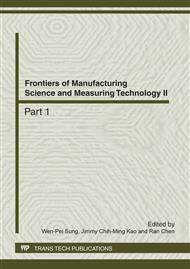p.764
p.768
p.772
p.776
p.780
p.785
p.790
p.794
p.798
Reliability-Based Assessment of the Effect of Climatic Conditions and CO2 Emissions on the Corrosion of RC Structures Subjected to Carbonation
Abstract:
carbonation rate of concrete structures are influenced by CO2 emissions and climate conditions. Carbonation depth prediction model was proposed and CO2 emission scenarios influence on concrete structures' carbonation damage was studied. As there are significant uncertainty and variability of CO2 emissions, deterioration mechanisms, material properties, dimensions and environments, the time-dependent structural reliability analysis was employed to predict the probability of corrosion initiation from 2000 to 2100, considering several IPCC future atmospheric CO2 emission scenarios. Results show:(1)carbonation depth in A1F1 and A1B scenarios is 36% higher than that invariant CO2 concentration, and A1B scenarios is 21%; (2)The corrosion initiation probability of RC structures in A1F1 and A1B scenarios are 84% and 67% higher than that invariant CO2 concentration , respectively.
Info:
Periodical:
Pages:
780-784
Citation:
Online since:
April 2012
Authors:
Keywords:
Price:
Сopyright:
© 2012 Trans Tech Publications Ltd. All Rights Reserved
Share:
Citation:


